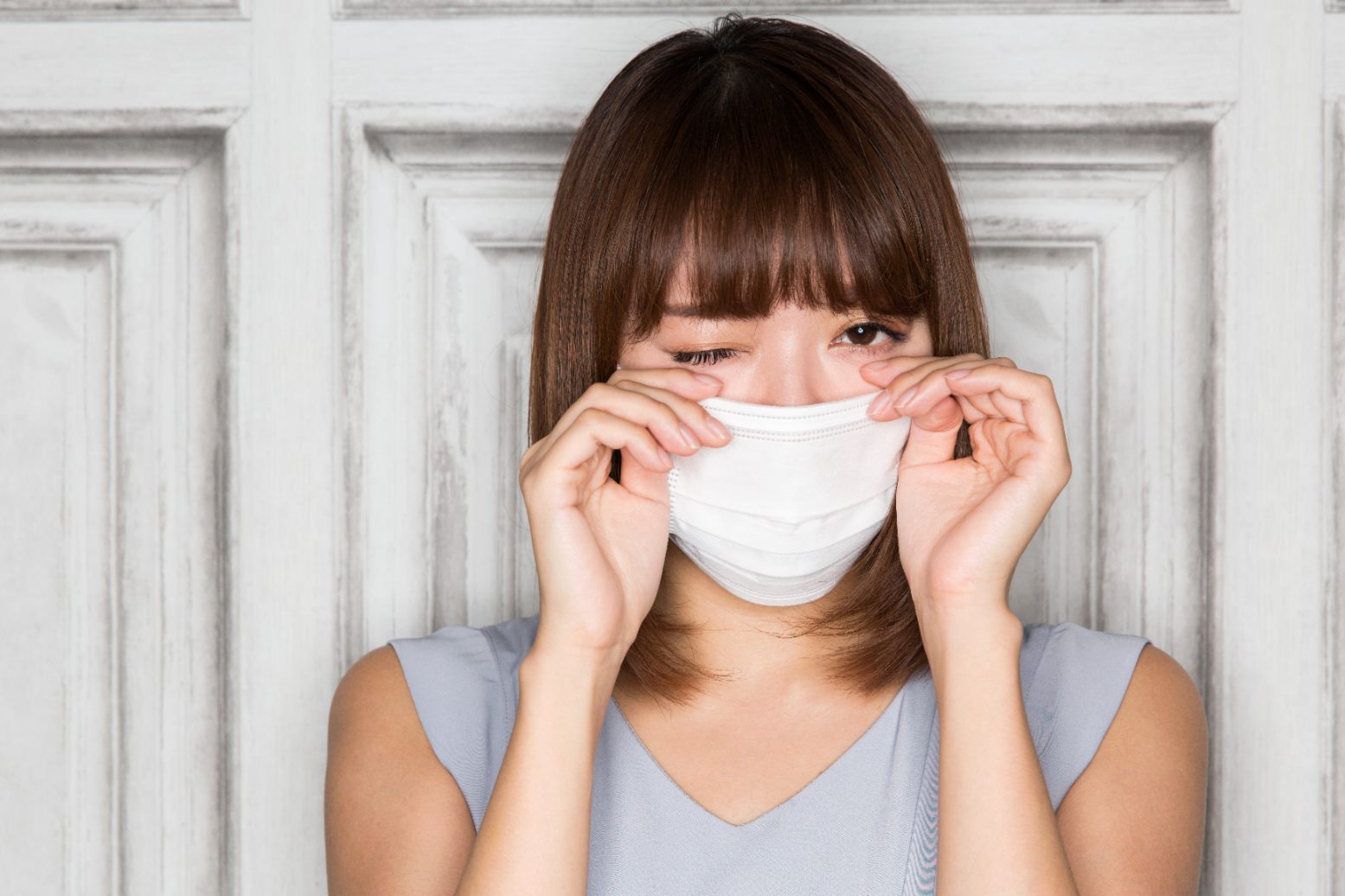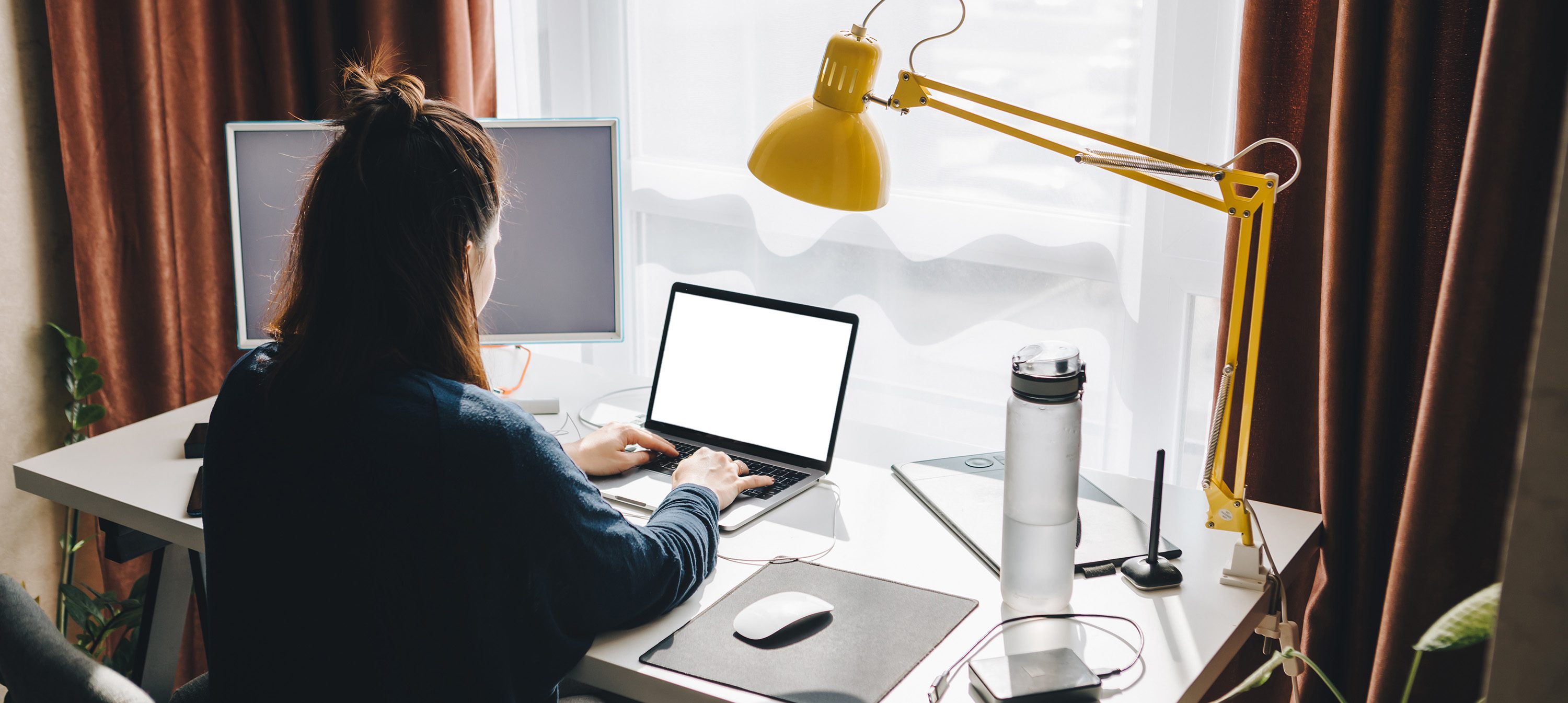
Eye health
The effects of remote work on dry eye syndrome
Do you suffer from dry eyes? This could be an effect of working from home! Find out how to fight this phenomenon with VU.
Eye health

The effects of the mask on dry eye syndrome
Eye health
Wearing a mask has become, within a year, one of the key weapons in the fight against the spread of COVID-19. If its effectiveness is proven in reducing the transmission of the virus, wearing a mask does however generate a certain downside, in particular an uncomfortable eye dryness. Have you ever had dry eyes since wearing a mask? In this article, we explain everything about the effects of the mask on dry eye syndrome, and how to fight this condition.
Throughout the day, your eyes continuously produce a tear film which acts as a protective barrier against dust, pollen etc. This makes sure that the eyes remain moist and lubricated. However, it happens that some people don’t produce these tears in sufficient quantities, or they evaporate too quickly. The eyes don’t receive effective lubrication, and this can lead to tingling sensations, irritation, itchy red eyes, blurred vision or even sensitivity to light.
There are two types of eye dryness in patients :
Contrary to popular belief, dry eye disease is far too underdiagnosed. The reason why is that the majority of patients think this is a natural age-related condition, and that few solutions exist. It’s true that it affects up to 30% of people over 50, but it can also appear in all segments of the population, with an increasing percentage amongst young people, due to their overexposure to screens. Rest assured, eye dryness can be very well cured when caught on time.
As a massive weapon in the fight against the spread of the coronavirus, this accessory protects us and our family. However, its extended use, sometimes all day for some workers, has resulted in a significant increase in cases of eye dryness. Faced with this generalized disorder, a name given by scientists around the world: Mask Associated Dry Eye, or more simply MADE. The alert came from researchers from the Center for Ocular Research & Education (CORE) from the School of Optometry and Vision Sciences at the University of Waterloo (Canada). They brought to light that a not well-positioned mask on the nose leads the air we breathe out to find its way up to our eyes. This pushes an air blast towards the surface of the eye, and creates conditions that accelerate the evaporation of the tear film, like a sustained breeze on wet skin.
All age groups of the population can experience mask-related eye dryness, with a higher probability in the elderly (they have a thinner and brittle tear film), contact lens wearers and people wearing the mask throughout the day, and working in front of screens or in air-conditioned places. For many patients around the world who previously suffered from this condition, the effects of the mask worsen these already very uncomfortable symptoms. For people who didn’t have eye dryness before the pandemic, there is an increase in optometric consultations, and they report discomfort in the eyes and vision, particularly during reading times or in front of screens. The effects of the mask on dry eyes therefore leave the entire population vulnerable.
The reflex that we often have when our eyes itch is to rub them to relieve the discomfort. In times of a pandemic, this is the thing to avoid, unless you have washed your hands thoroughly beforehand. In fact, transmission of the coronavirus is possible through the mouth and nose and, to a lesser extent, possibly through the eyes. Putting dirty hands close to your face can increase your risk of getting the infection.
The effects of the mask on dry eyes are not inevitable, and it’s absolutely possible to reduce the symptoms with simple practices.
It’s the easiest and fastest solution to set up, yet one of the most underestimated. Always make sure that the mask is well positioned on the bridge of your nose, especially if you are wearing glasses, sunglasses or contact lens. Pinch the metal rod so that it suits the shape of your face, and that the mask sticks properly to your skin. Also, make sure it doesn’t get in the way of blinking. An improper blink doesn’t provide enough tears for your eye hydration. If you wear a hand-made fabric face cover, these usually don’t have a metal rod that provides a good hold stuck to your nose. If you suffer from dry eyes and wear this type of mask, you may consider switching to a surgical mask.
With too much air conditioning, the ambient air becomes too cool and dry. Combined with prolonged mask wear, this can dramatically increase the symptoms of eye dryness, in addition to putting you at risk of catching a cold! Don’t hesitate to ventilate your rooms well, as the pollutants inside our homes and workspaces are very harmful to our eyes, as they are to our overall physical health. Ventilation also provides moisture, which is useful for lubricating your cornea. A humidifier can also be a good solution!
It’s known that screens play an important role in dry eye syndrome. Overexposure leads to eye fatigue and infrequent blinking, leading then to eye dryness. The mask worn all day, combined with daily work in front of the screen, only worsens the symptoms. The solution is to allow yourself more regular breaks throughout the day, as well as to limit your time of exposure to screens. Of course, this can be difficult from one person to another, due to personal and professional obligations, but it’s fundamental! For instance, after your work day, grab a book or go out and get some fresh air instead of sitting on the computer or getting in front of TV to relax. During your breaks, take the opportunity to go outside and remove your mask. You will come back fresh, and your eyes well rested!
Apply artificial tears
Lubricating solutions, like I-DROP® Adaptive Visco Eye Drops (Artificial Tears) are a great way to fight this dry, itchy feeling. In addition to providing long-lasting relief and comfort, these aqueous or oily solutions stand out because they contain no preservatives, and require few daily applications, for superior long-lasting lubrication.
More advanced clinical treatments
If the solutions and drops are not sufficient enough, there are more advanced treatments offered by some clinics, including your VU optometrist. Amongst them are:
The mask remains one of the most effective items in the fight against COVID-19. The good news is that optometrists now have the knowledge about the downsides of masks on dry eyes, and how to treat them. Thanks to the many solutions developed by your VU optometrist, your eye health is in good hands. If you experience any signs of discomfort or eye strain, don’t wait! Make an appointment for a consultation to get an eye exam.

Eye health
Do you suffer from dry eyes? This could be an effect of working from home! Find out how to fight this phenomenon with VU.

Advices & tips
When telecommuting, our eyes are constantly exposed to screens for many hours, which leads more and more people to experience eye strain. It is therefore important to know a few anti-eye strain tips and tricks in order to set up a good telecommuting routine and avoid the unpleasant symptoms of eye strain.
![Les tendances lunettes de soleil [été 2021]](https://b3691665.smushcdn.com/3691665/wp-content/uploads/2021/05/Les-tendances-lunettes-de-soleil-ete-2021_blog.jpg?lossy=1&strip=1&webp=1)
Eyewear
Spring is here, and we can finally pull out our summer looks! Whether it's for a casual stroll or a sunbathing session on the terrace, sunglasses remain a must-have fashion accessory. The spring/summer 2021 sunglasses trends are very diverse this year, whether it's in style, shape or color. Our eyewear experts have prepared a guide to this season's sunglasses trends. Get your glasses!